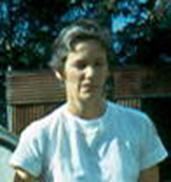Years active 1964–1977 Profession Surgeon | Name Grethe Rask Role Physician | |
 | ||
Born 1930 Thisted, Denmark Known for Being one of the first non-Africans to die of HIV/AIDS Died December 12, 1977, Copenhagen, Denmark Similar Gaëtan Dugas, Randy Shilts, Ryan White | ||
Margrethe P. Rask (1930 – 12 December 1977), better known as Grethe Rask, was a Danish physician and surgeon in Zaïre (now the Democratic Republic of the Congo). After setting up her own hospital in a village called Abumombazi in 1972, she transferred to Danish Red Cross Hospital in Kinshasa in 1975. She returned to Denmark in 1977 after developing symptoms of an unknown disease, which was later discovered to be AIDS. Three and a half years later in June 1981 the Centers for Disease Control recognized AIDS. Rask was one of the first non-Africans (along with Arvid Noe) known to have died of AIDS-related causes.
Contents
Early years and Zaïre (1930–1974)
Born in 1930 in the Danish town of Thisted, Dr. Rask practiced medicine in Zaïre for a brief period in 1964, when she was recalled back to Europe for training in stomach surgery and tropical illnesses, and from 1972 to 1977, first at a small local hospital in the Zairian town of Abumombazi, and then at the Danish Red Cross Hospital in Kinshasa starting in 1975. She was likely first exposed to HIV during 1964. Her friend and colleague, Ib Bygbjerg (a physician specializing in communicable diseases), wrote in a 1983 letter to The Lancet that "while working as a surgeon under primitive conditions, she [Rask] must have been heavily exposed to blood and excretions of African patients."
Illness and death (1975–1977)
Rask apparently suffered from symptoms of Pre-AIDS starting in late 1974, including diarrhea, swollen lymph nodes, weight loss, and fatigue. Although the symptoms receded temporarily following drug treatments in 1975, the symptoms later grew considerably worse. Following a vacation in South Africa in July 1977, she could no longer breathe and relied on bottled oxygen. She flew back to Denmark, where tests at Copenhagen's Rigshospitalet discovered she had contracted a number of opportunistic infections, such as Staphylococcus aureus (staph infection), candidiasis (yeast infection), and Pneumocystis jiroveci pneumonia (PCP, a fungal infection of the lungs formerly known as Pneumocystis carinii pneumonia). Tests also showed that Rask had a nearly non-existent T-cell count, leading to a severely depressed immune system. At the time, the doctors treating Rask were at a loss to explain her disease progression, which in retrospect, would come to be seen as one of the first cases of AIDS recorded outside Africa.
After numerous tests and unsuccessful treatments, she eventually returned home to her cottage on a fjord in November 1977, where her long-time female partner (a nurse) cared for her. She was called back for more tests in December and returned to the Rigshospitalet in Copenhagen where she remained until she died of AIDS-related Pneumocystis jiroveci pneumonia on 12 December 1977.
Autopsy and testing
A subsequent autopsy revealed that Rask's lungs were filled with a fungus known as Pneumocystis jiroveci, a rare type of pneumonia that mostly affected people that were immunocompromised and that is today known as a common symptom of AIDS. Rask's blood samples were assayed in Copenhagen in 1984 following extensive research on AIDS. The test was done with a very early version of ELISA and tested negative for HIV/AIDS. However, two later tests were done in the United States with more advanced assays in 1987; both tested positive. Therefore, Rask is one of the first non-Africans to die of AIDS.
